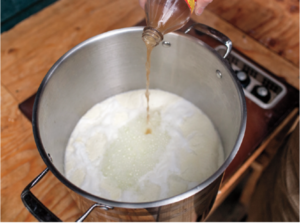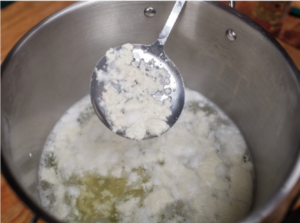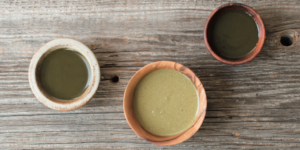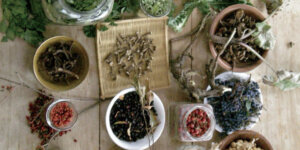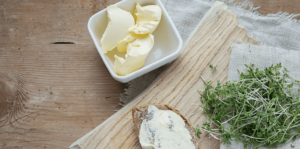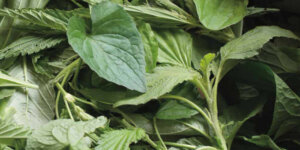Say Cheese! A Simple & Fast Ricotta Cheese Recipe
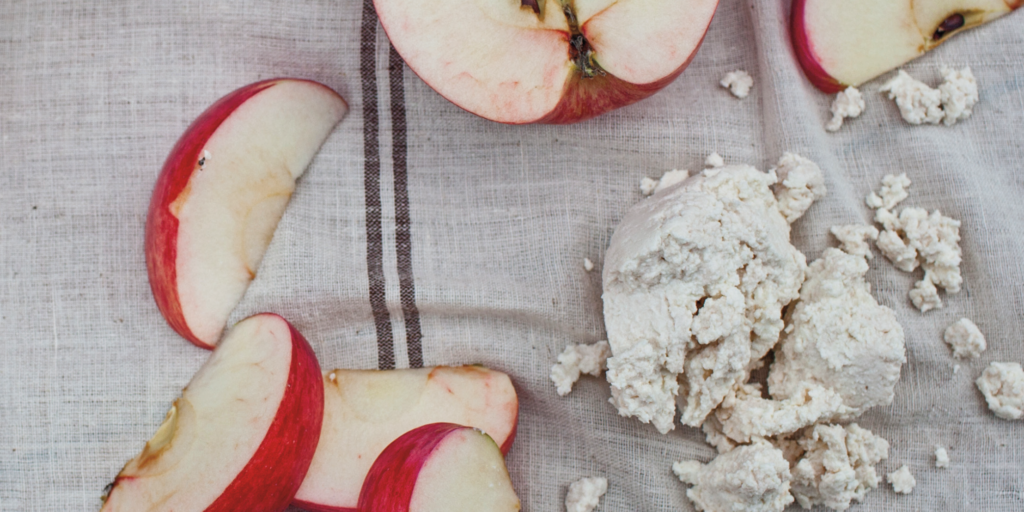
Cheese lovers, it’s time to add another recipe to your list! Make this easy (and cheesy) ricotta recipe at home in as little as one hour.
The following is an excerpt from The Art of Natural Cheesemaking by David Asher. It has been adapted for the web.
Recipe: Fast Ricotta Cheese
Estimated time frame: 1 hour
Ingredients
- 1 gallon (4L) fresh whey, preferably more
- 1/4 cup (60mL) vinegar per gallon whey or 1/2 cup (120mL) lemon juice
Equipment
- 2-gallon (8L) stainless pot
- Ladle or slotted spoon
- Good cheesecloth
- Stainless strainer
- Large stainless bowl
Yield
-
Between 4 and 8 ounces (100-225g) ricotta per gallon whey
Technique
Bring the whey to a boil: Pour the whey into the pot and bring it to a boil over medium-high heat. Don’t worry about stirring the whey – it will not burn on the bottom of the pot.
But pay attention to the whey as it gets hot: Once it comes to a boil, it can boil over and cause quite a mess!
Pour in the vinegar or lemon juice as the whey is boiling. Don’t bother stirring it; the boiling whey will mix the acid in thoroughly.
Let the whey come to a full rolling boil again, but only for a moment. The high temperatures help to ensure a full ricotta yield.
Let the whey cool for 5 minutes. Turn off the heat, and let the whey settle.
You should begin to see signs of separation: The whey will become clearer and more greenish yellow, and there will be fluffy clouds of ricotta curd that have coagulated out of it. Let the whey cool for 5 minutes to help the ricotta firm up.
Strain the ricotta: Using a ladle or a slotted spoon (depending on the type of whey and the quality of milk, the curds may be easier to harder to strain), scoop up the ricotta that has risen to the top of the pot, and transfer it to a cheesecloth-lined colander perched on the stainless steel bowl.
Let the ricotta drain and cool. Ricotta is best savored while still slightly warm. Once cooled, it should be kept refrigerated.
Recommended Reads
Recent Articles
Looking for a delicious (and spicy) DIY project to work on this spring? This recipe for foraged, tabasco-style ramp hot sauce is sure to turn up the heat. The following is an excerpt from The Forager Chef’s Book of Flora by Alan Bergo. It has been adapted for the web. Unless otherwise noted, all photographs…
Read MoreNew to foraging? Here are a few beginner tips to get you started on your hunt for wild edibles! And next time you are taking a walk around the neighborhood, keep your eyes peeled for these thirteen plants: dandelion, mallow, purslane, plantain, thistle, amaranth, dock, mustard, grass, chickweed, clover, lambsquarter, and knotweed. The following is…
Read MoreHerb butter is a fantastic trick to have up your culinary sleeve! These two recipes offer simple ways to use edible flowers and herbs that you can pick right in your backyard. If you’ve never made herb butter, you’re in for a treat. These recipes are from The Occidental Arts and Ecology Cookbook, by The…
Read MoreLooking for a simply & healthy snack to make this spring? These tips will help you whip up a delicious Greek-style yogurt with ease. The following excerpt is from Keeping a Family Cow by Joann S. Grohman. It has been adapted for the web. Making Yogurt Milk from a high-milk-solids breed such as the Jersey…
Read MoreWhether you are an expert forager or new to the skill, it’s important to understand how to store your freshly picked bounty. Luckily, author Alan Bergo has the lowdown on how to harvest wild greens and cook them for the best storage so your harvest can stay fresh for days after being picked! The following…
Read More
